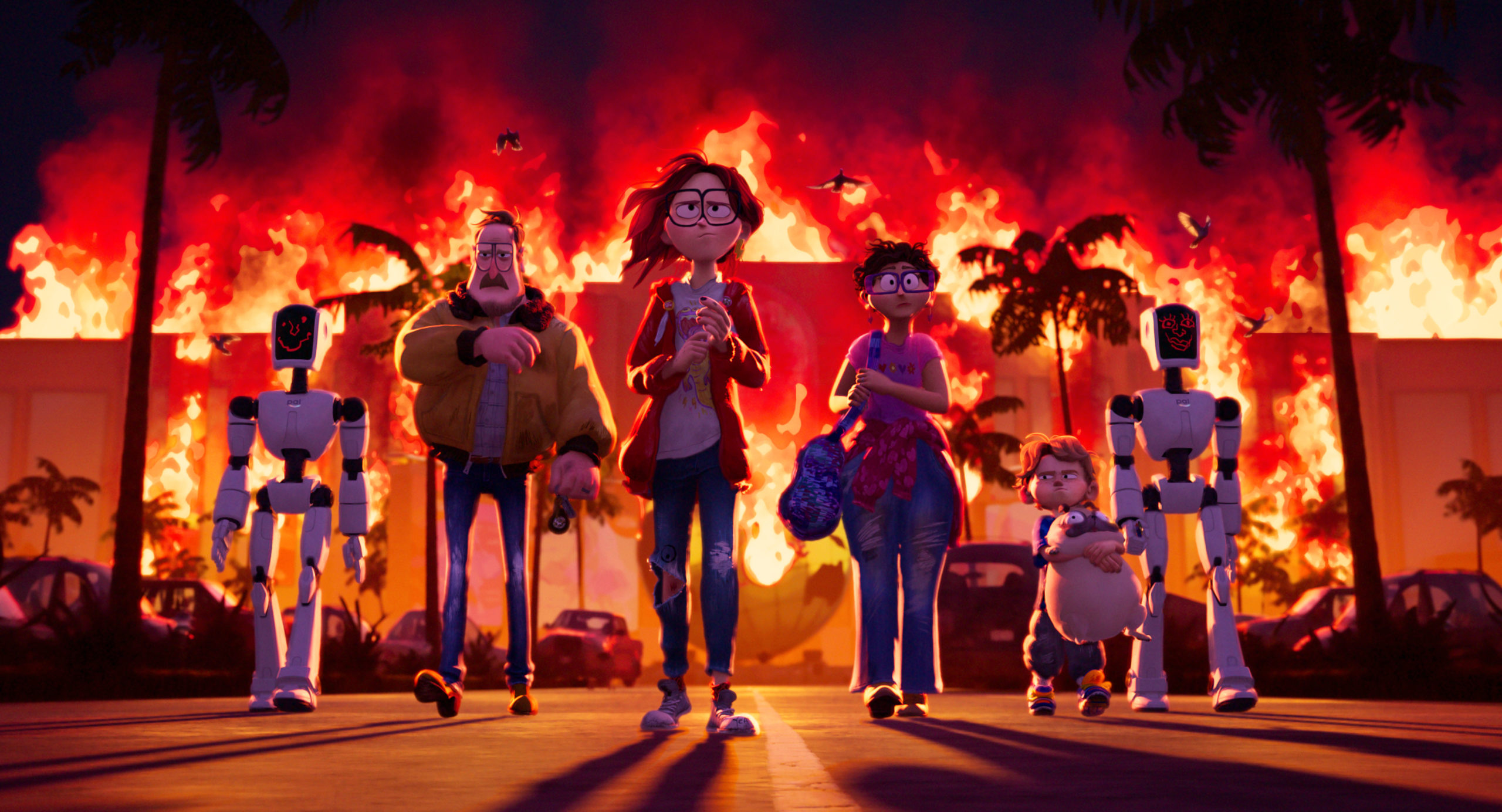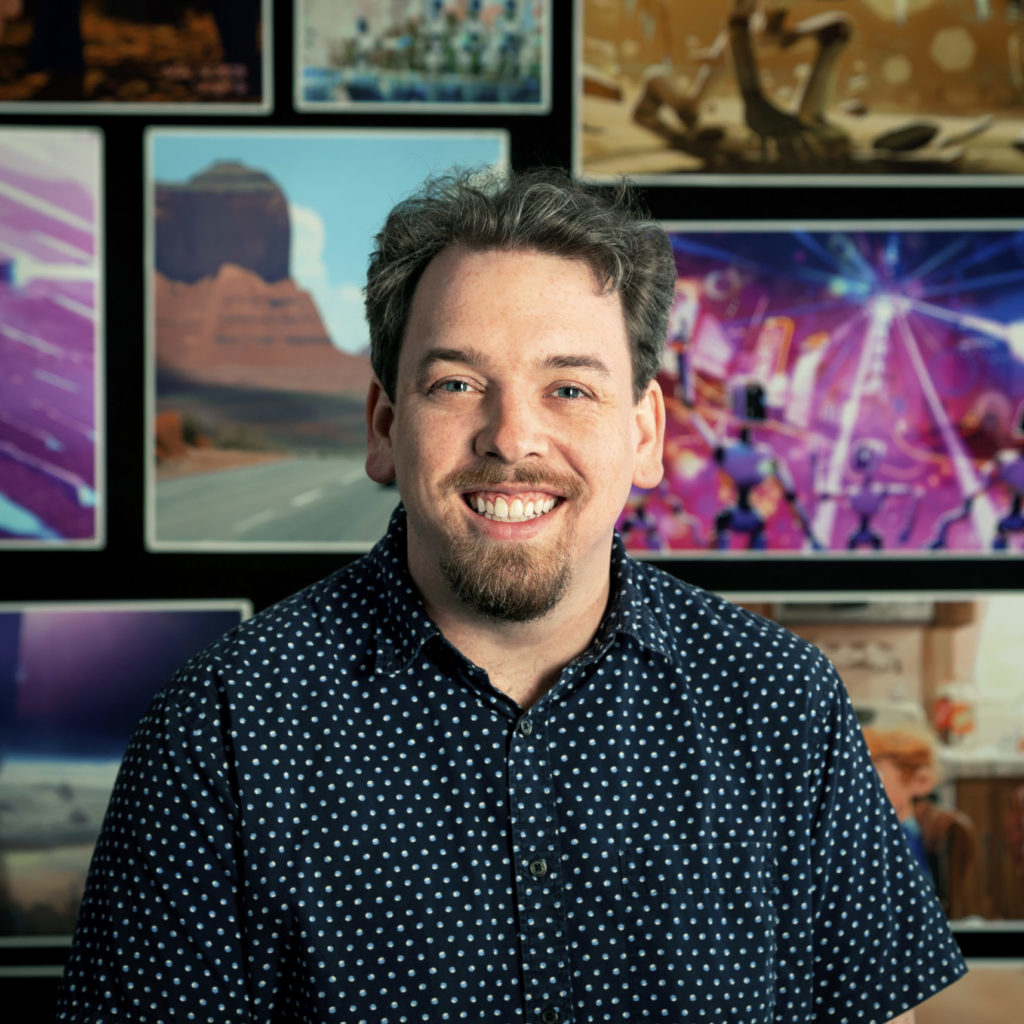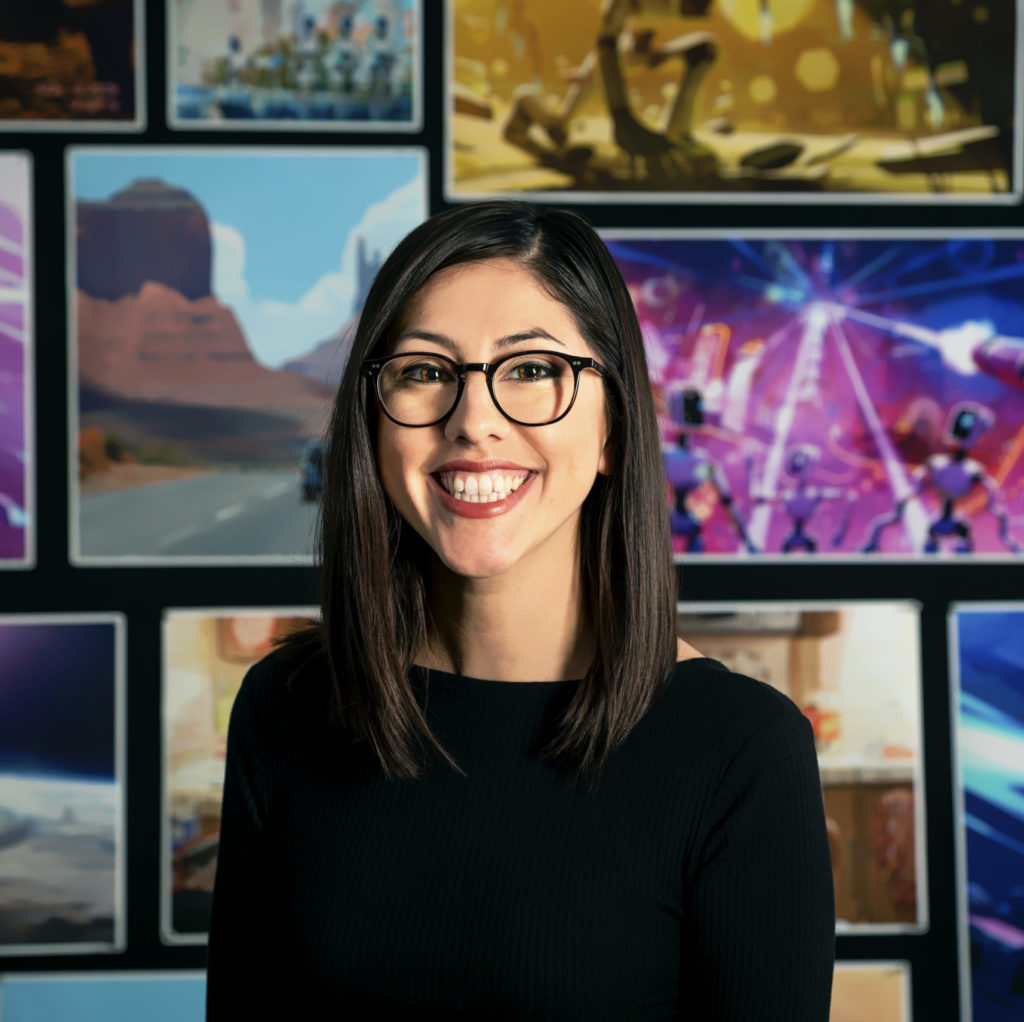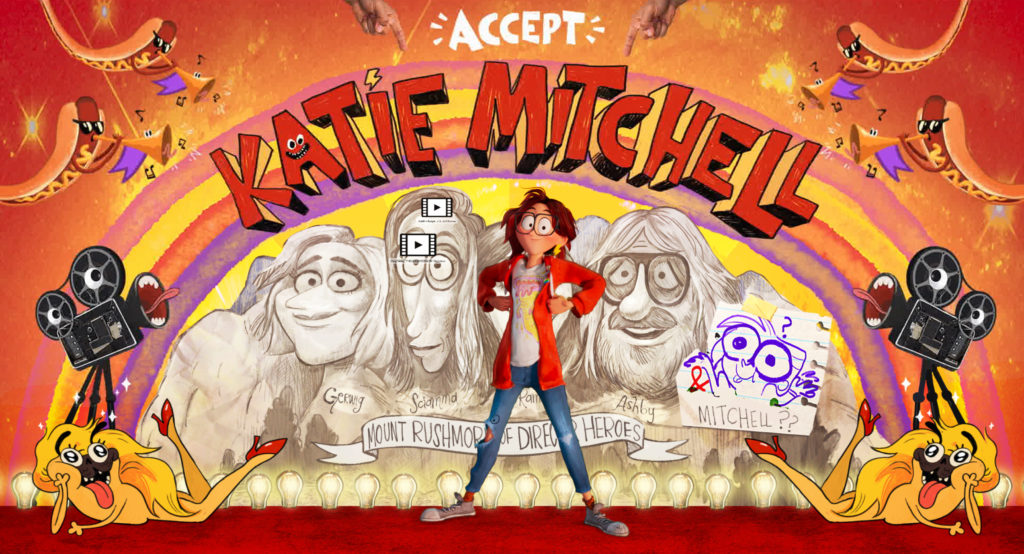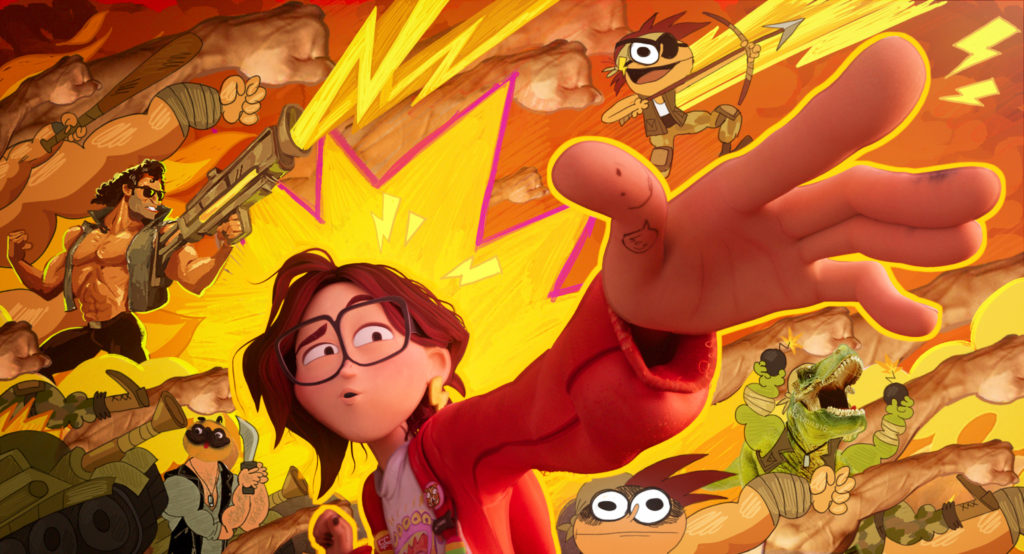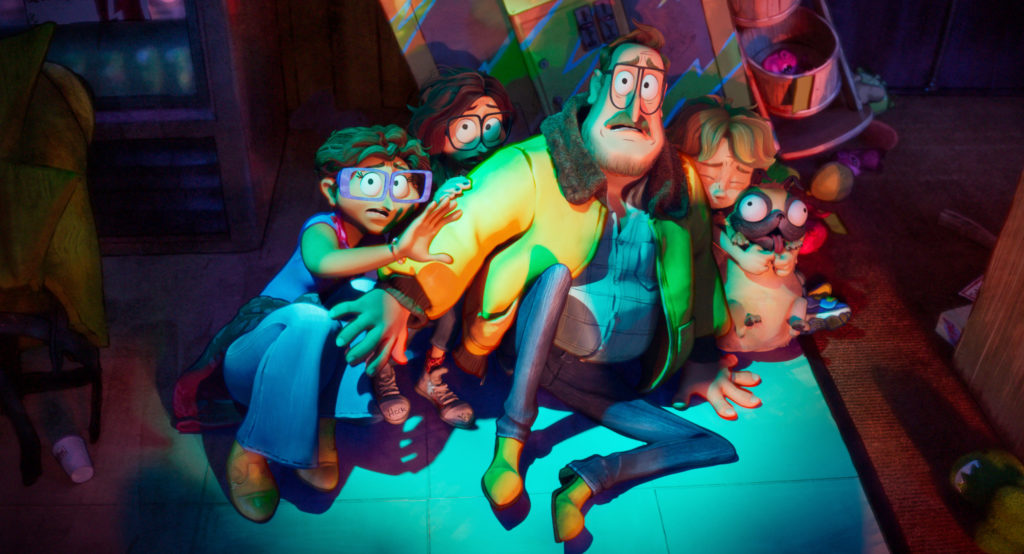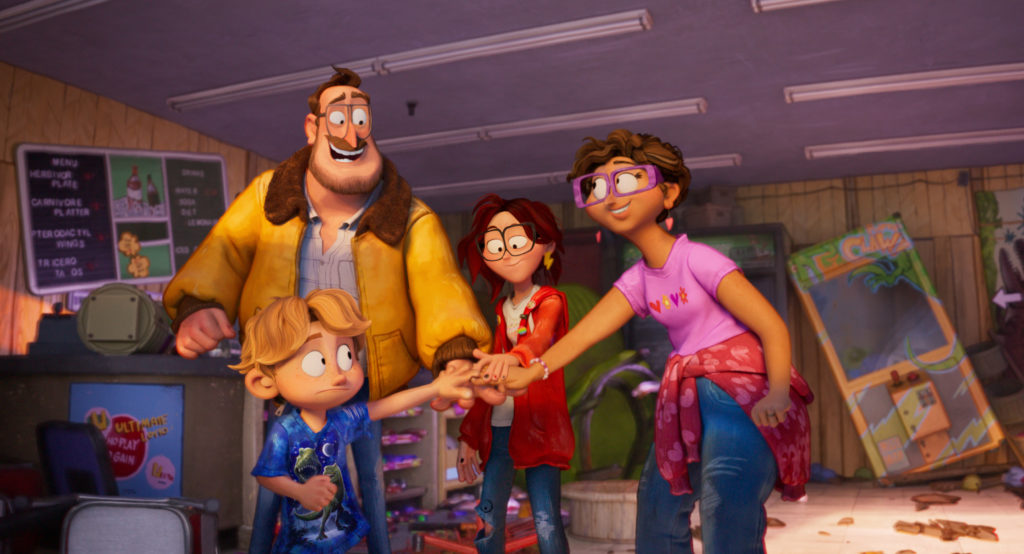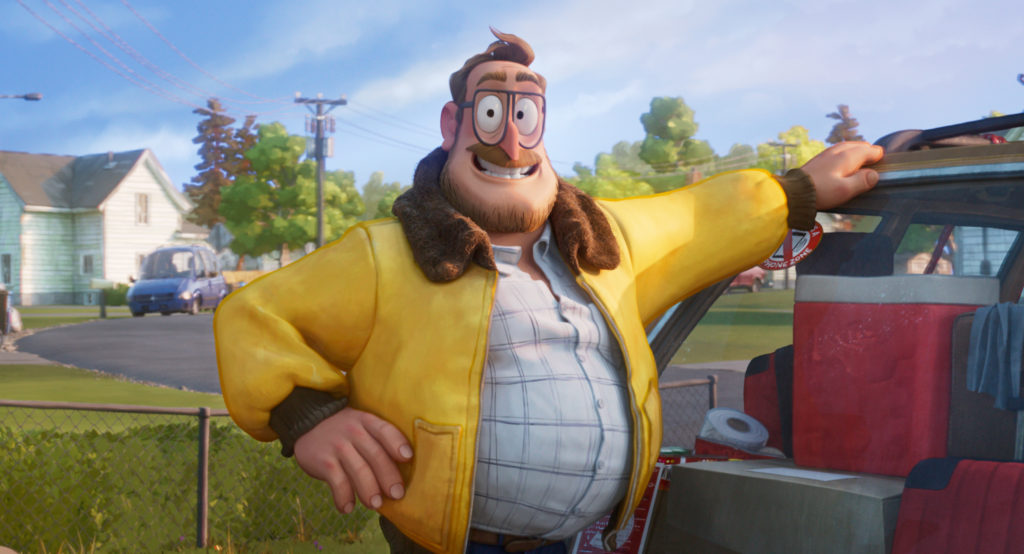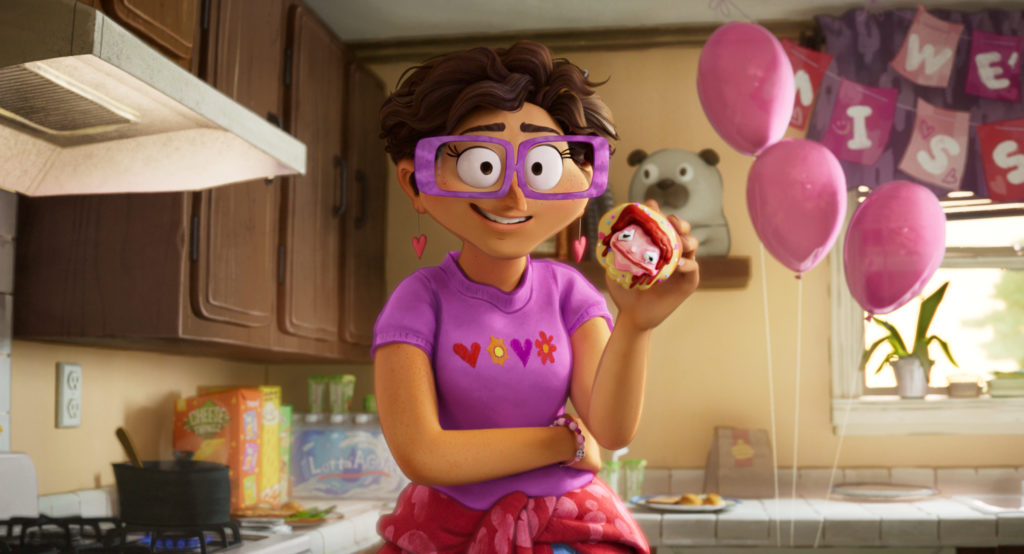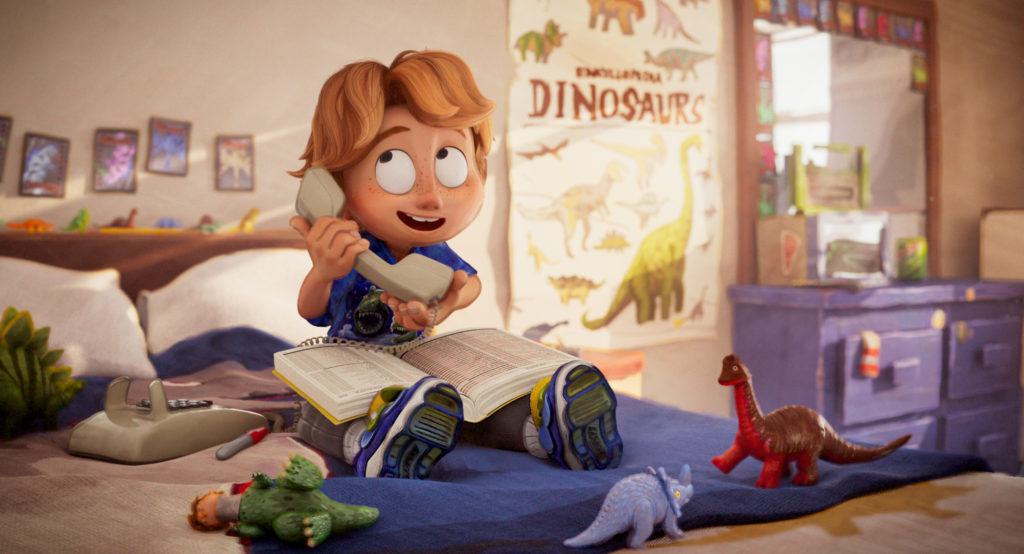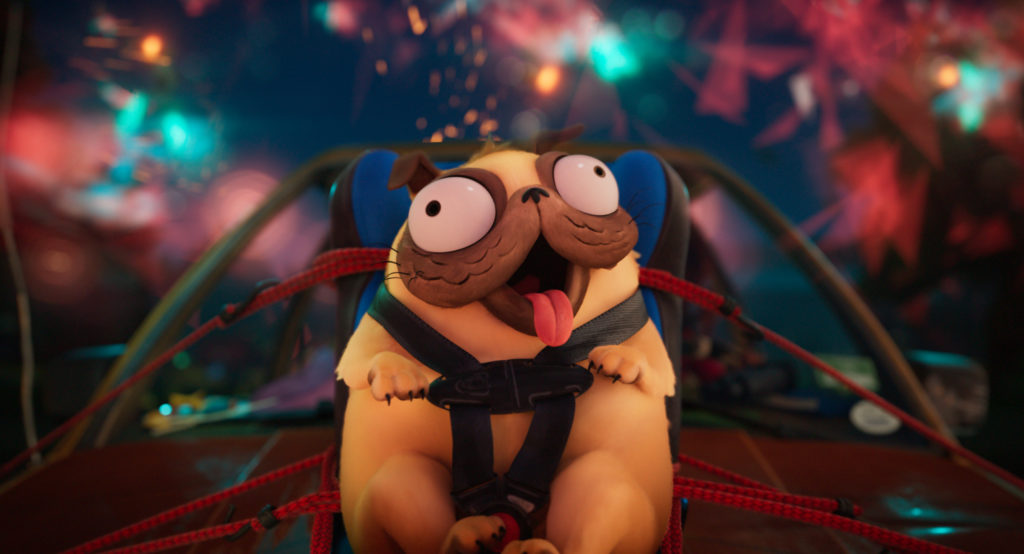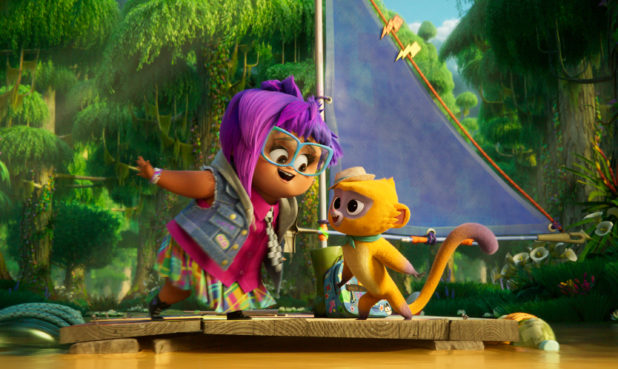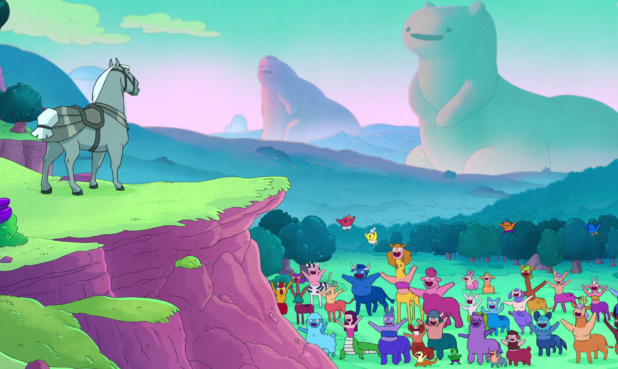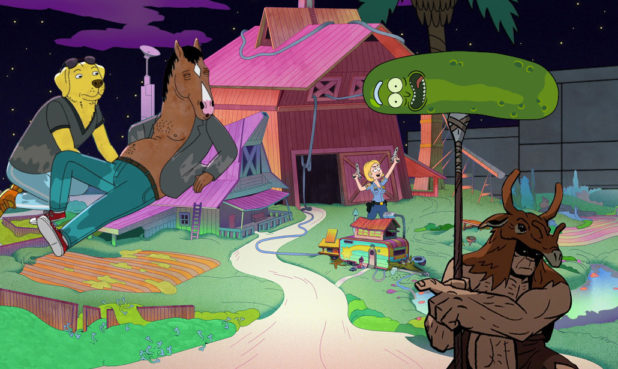When Director Mike Rianda, Production Designer Lindsey Olivares, and Head of Story Guillermo Martinez gathered (on Zoom, of course) to discuss Netflix’s The Mitchells vs. The Machines, they spent as much time laughing as they did talking. It’s clear this crew is close. It also became clear, during their conversation with Keyframe, that they feel great affection for their story about teenage filmmaker Katie Mitchell and her very flawed family taking on a smart personal assistant named PAL (think Siri out for some serious revenge) and her robot army.
Keyframe: This movie is really fun to watch. It blends so many different techniques like CG, comic strips, and live action. Tell us about this mosaic approach.
Lindsey: It was important to us that [the movie] felt handmade and human touched. That kind of aesthetic played a part in Katie Mitchell’s filmmaking style. There’s an intentional scrappiness. And her drawings are a little imperfect. Imperfection is a big thing we celebrate and talk about.
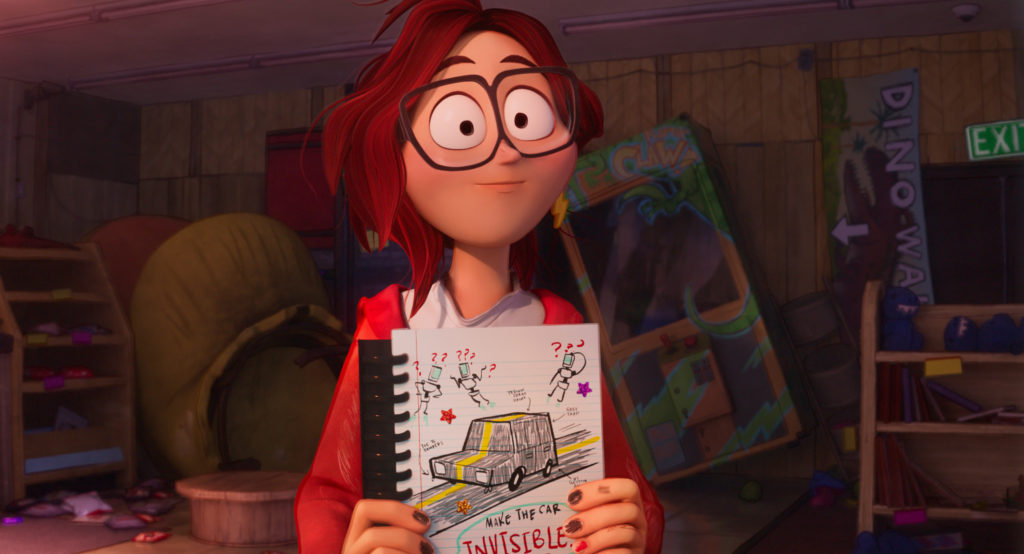
Mike: When [producers Phil] Lord and [Chris] Miller had just come on, we were like, oh the gates are down, we can do all the crazy ideas we’ve always wanted to. So we had Guillermo do a bunch of storyboards. We were like, just go wild. Put in lightning bolts and crazy monkey heads and stuff.
Guillermo: It almost got to the point sometimes where you really couldn’t connect emotionally because there were way too many lightning bolts. It was a super crazy learning experience. How much is too much?
Lindsey: [We created] a kind of 2D imperfect cartoonyness with tools like Photo Collage. It’s nice because you see that with the things people actually do on social media like an Instagram story or something. That kind of language is very collagy—here’s my photos, here’s a little sticker on it, and I want this different font.
Keyframe: How did you keep all of these elements flowing together?
Guillermo: Oh boy, for four years, there were a lot of continuity errors. But we were getting smarter and good enough to know, okay, here’s how to fix this and how to fix that. It’s definitely trial and error.
Mike: And to brag about Guillermo a little bit. He was so responsible for the tone of the movie working. I feel like he was able to balance a really emotional scene by taking the character’s emotions seriously, but he was also able to make things so funny at the same time. Guillermo was always working with the others artists to make sure that we were striking the right balance.
Guillermo: Especially in a movie about a robot apocalypse, there’s a huge possibility of things being very bleak and dark. Which is tough for me because I’m a huge fan of horror films, and I can’t get too excited. I have to rein it in. There was a time where the robots, instead of putting people in pods and flying them away, put people in a trunk in piles of bodies. In response to that we tried to sweeten it too much, and it broke the scene.
Keyframe: So how did you make it work?
Guillermo: My job with the story team was to be, how can we make it not as dark, and pretty funny. Then once it got into Lindsey’s department, they made it very lush and beautiful. It was hard work.
Mike: We love big crazy jokes, like swing for the fences. We’re going as hard as we can, because we love to laugh, but we also love to cry. This is going to sound like a joke, but we had a laugh-o-meter, and it was like, okay, can we get to 50 guaranteed laughs? There was also a tear-o-meter. And it was like, can we fill this child’s eyes with tears? We realized to make both those things work, you had to downshift and slow the filmmaking down and be really tender, and cool off on all the jokes, and let those moments play as human moments.
Guillermo: I do want to throw a shout-out to [Storyboard Artist] Hanna Cho. The story team was amazing. I think they all have their own strengths. And Hanna … she was the assassin that was sent to do all the emotional stuff. My acting, when it comes to storyboarding, is very broad sometimes. She brings it down—a drawing would be very rough, but you could still see Katie having difficulties trying to talk to her dad. If you’re crying, there’s a big chance it was one of Hanna’s scenes.
Lindsey: Even in the design component we looked really closely at those boards. They had a lot of love in them. So our young version of Katie has a lot of influence from Hanna’s work. We would definitely evolve and build … but the things that were really special in the storyboards, in the early phases, we would hug closely to.
Guillermo: And there was a lot of stuff that you guys did with the art department that influenced us and influenced the scenes. There became this cycle—a snake eating its own tail.
Lindsey: I always felt we were working like a tower of cheerleaders. Guillermo’s holding us up, and we’re supported by these great animations.
Guillermo: But sometimes I’m floating and now Lindsey’s holding me. And we’re not touching the ground anymore because we’re holding each other.
Mike: You lifted each other by blowing smoke up each other’s butts. You’re great. No, you’re great. It was all of our first time with this level of responsibility, so we had to tell each other we were great.
Keyframe: Once you’re done laughing, tell us about the movie’s tech aspects.
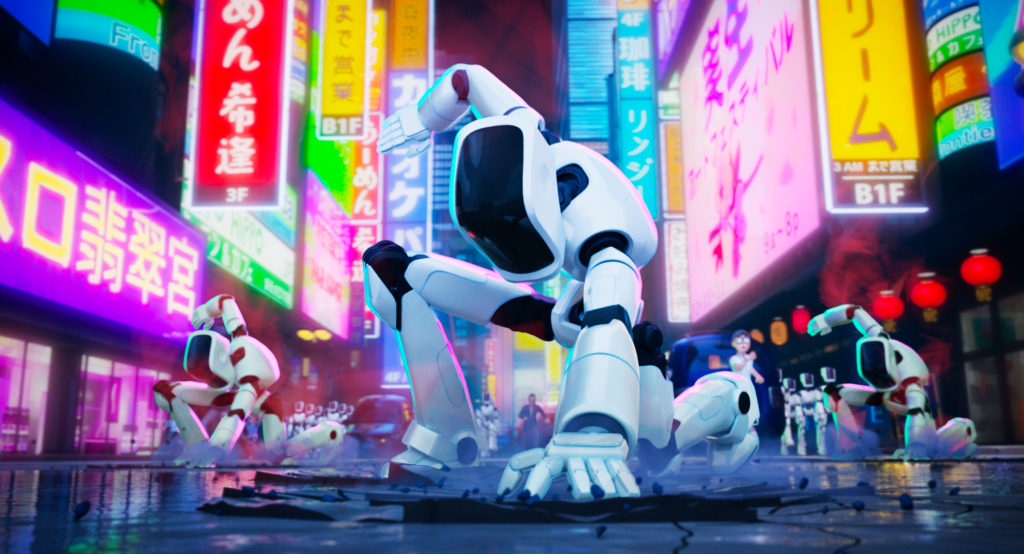
Lindsey: In approaching production design, you’re really kind of caricaturing the mood of a scene and the story points. With all of the PAL world or robot components of the movie, we’re caricaturing a side of tech. The faces are almost like a tech app caricature. Smooth, calm gradients and the palette that a lot of tech branding has. Then all the PAL robot language is very geometric, while the human stuff is complicated and clumpy and wrinkly.
Mike: That’s a cool way to talk about production design. Oh, I’m caricaturing the mood of the scene. I also think with the pods and stuff, we’re kind of caricaturing the isolation and alienation you sometimes feel when you’re on your phone. We’re trying to say, what if everyone is next to each other but alone?
Lindsey: I think unfortunately it feels very familiar this year. Like right now, we’re all together but we’re not in the same room. It’s a little eerie. We look like a version of [the pod scenes].
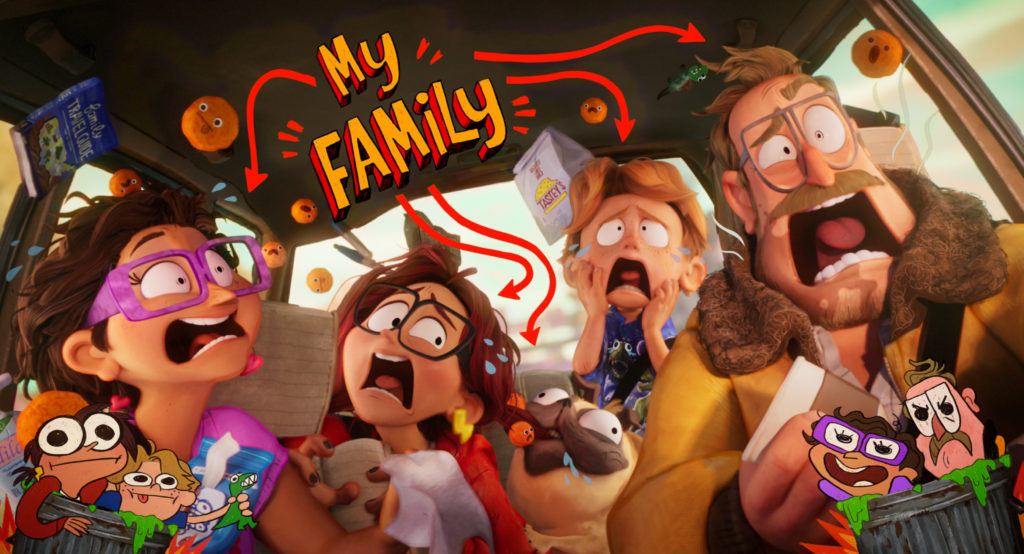
Keyframe: The movie is laugh-out-loud funny, but there are clearly serious takeaways. What do each of you hope that will be?
Mike: Personally, I’m very Pollyannish about things. I want everyone to be happy! But really, the hope was that if we did a good job, we could inspire parents to reach out more to their kids and kids to reach out more to their parents. And for people to fight a little bit harder to have those relationships be stronger than they would be otherwise. Because it’s easy to ignore a call from your mom when, maybe, you’re writing a movie about her or something, and you’re like, mom, no time to talk to you right now, I’m writing a charming scene about how much I love you. It’s harder [to do], but it’s ultimately worth it.
Lindsey: For my department, visually, I really like the celebrating imperfections thing. I loved seeing some early feedback from people, just kind of responding, oh, this character looks like me, or noticing [Katie’s] hoody looks like it’s got pilling and it’s old and stained. I think that’s nice in this Instagram era, being a little bit more honest, or a little bit more celebratory of real people. We tried to lean into things that are real and recognizable. If there can be a loving fondness of real human things and less of the curated version that a lot of times we present, it’s a nice takeaway.
Guillermo: For me, I don’t want people to be like, man, this movie really changed me, and then throw their phones in the trash can. I want this movie to be an embracing of the middle ground. Technology is good for multiple reasons, but you should also go outside. What I liked about [the dad is that he] goes [to Katie], “So, I went to your YouTube channel,” and not the whole thing of like, “You know what, no more technology for you! The end.” I think everything in moderation. If you spend time in technology, maybe go outdoors, but also if you don’t spend any time in technology, maybe do some research. Open your horizons.
This interview was edited for length and clarity.
